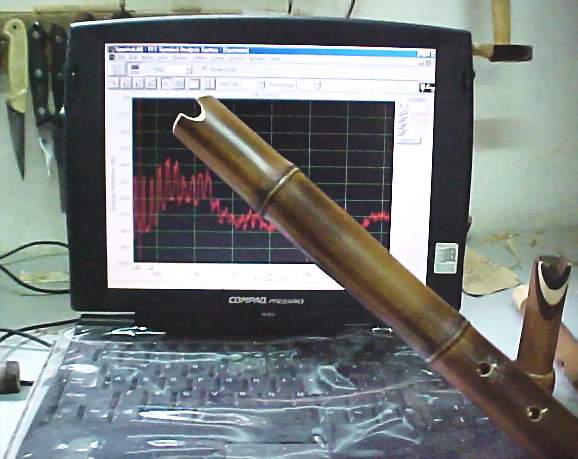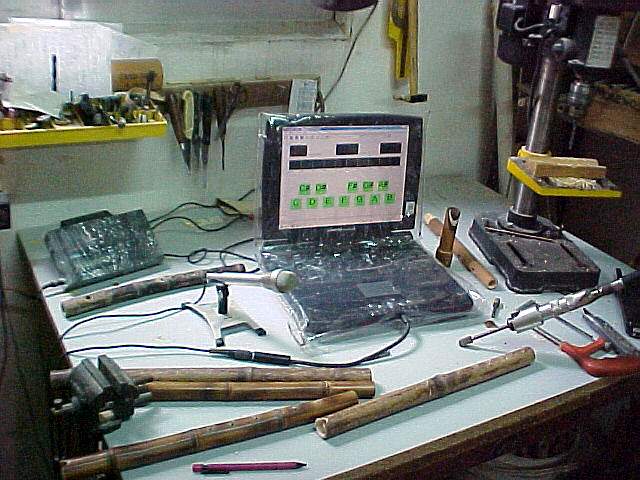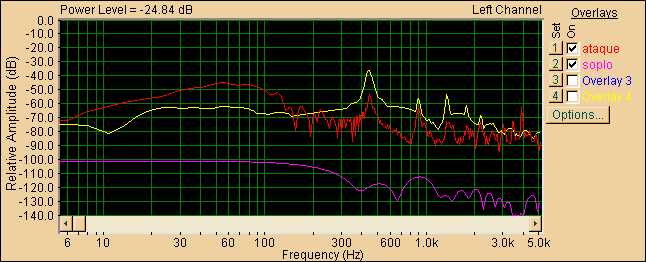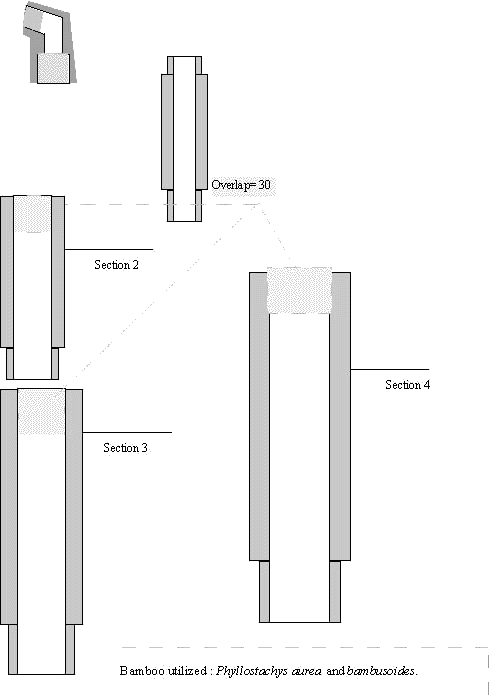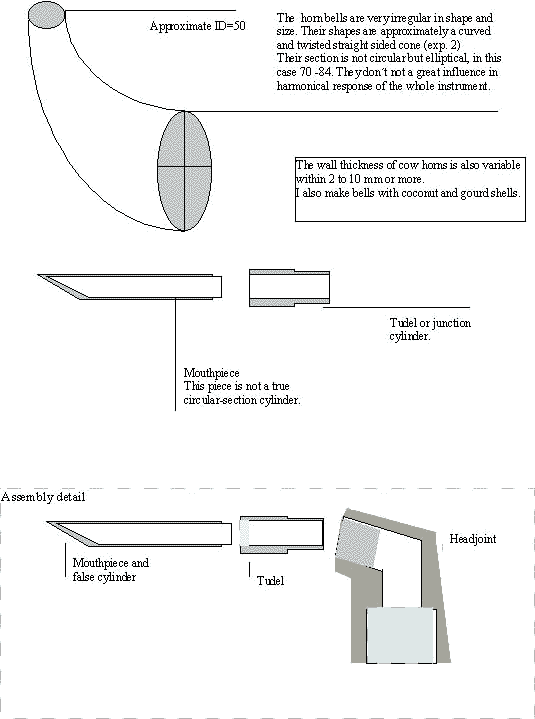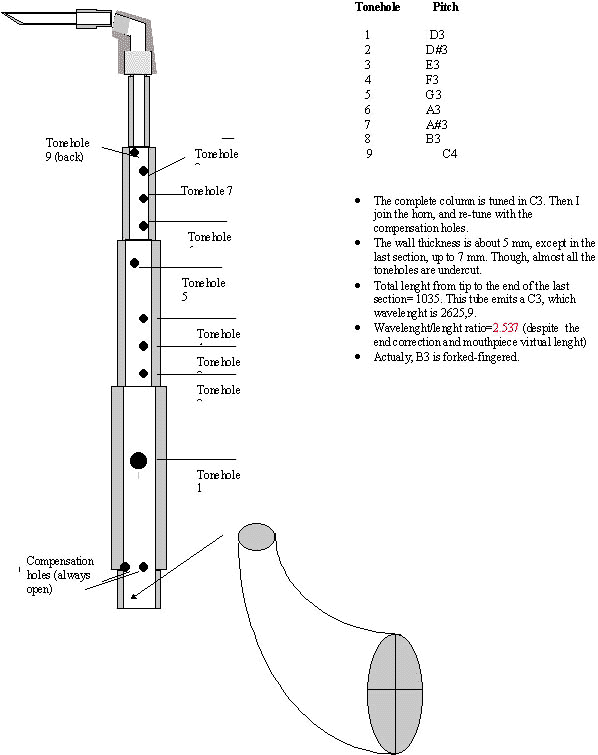| |
|
| The
following image shows a note played on a bamboo saxophone, compared
with its octave |
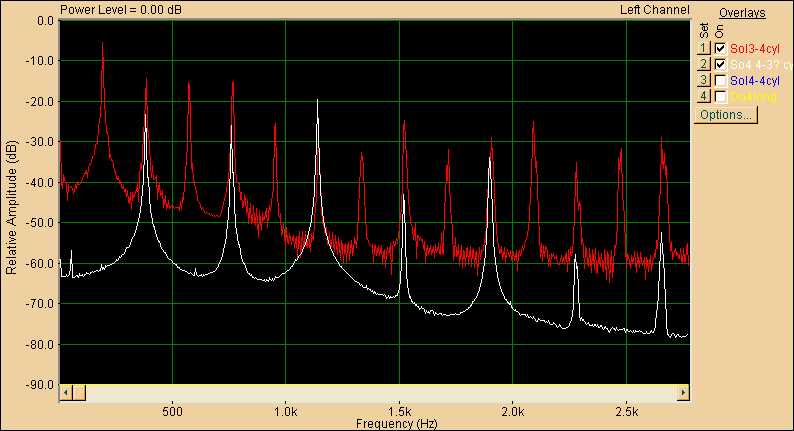 |
| Below,the
compared spectrum of the same note played in two different bamboo
saxophones |
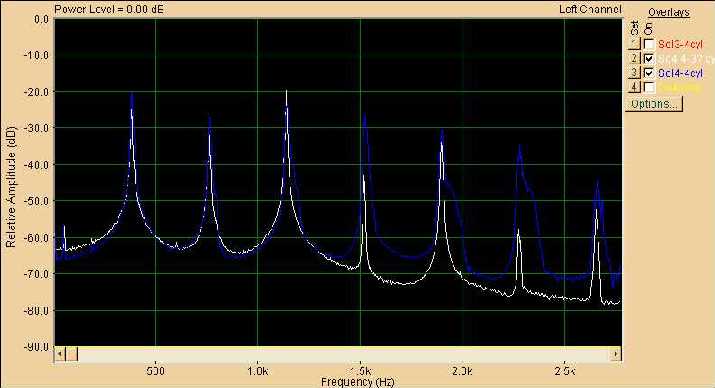 |
|
Dr John Coltman has
given us several softs, including one to calculate frequency
and modes in tubes with irregular geometries (stepcone.bat).
It is useful to design bamboo saxophones.
Quena.bat is another soft designed by Coltman that calculates
frequencies and stored energy on quenas. Bambures.bat calculates
the admitance of horizontal bamboo resonators used in marimbas
An
interesting interview with Dr Coltman about winds instruments
click here
|
BAMBOO
SAXOPHONES IN C3 |
These
diagrams describe the parts of bamboo tenor saxophones
made by Angel and Mariana.
They have been analyzed by professor Jean Pierre Dalmont
in the Laboratoire d'Acoustique du Maine (Le Mans, France).
Usually, our bamboo saxes have recorder fingering, except
the tenor,
on which you can obtain Eb and Bb with direct fingering.
For this we use a 9 toneholes fingering, two of which are
covered by keys.
|
|
Since
the beginning of our activity we had great curiosity to know
how a simple breath into a tube could produce so pleasant a
sound. Perhaps due to our scientific background (although in
other areas like Geography and Geology) we decided that our
search should start at the investigation of the resonant qualities
of the material itself.
This point of view is not exclusive. The essence of a wind instrument
is the sensation that it causes in the player and the listener.
Also, with these instruments one feels as if one has participated
in a piece of the Humanity's History.
We felt that the formality and logic of science could explain
things such as how the instruments work .
That knowledge would be good to improve their performance.
We searched in physics and music literature, but in fact little
was
explained because the sound phenomenon is something quite more
complex than what one supposes at first. We decided, then, to
cross the frontiers of our own language, and we discovered several
books that helped us formalize a more or less complete panorama
of what happens when one blows into an instrument. Perhaps the
best and cheapest is Air Columns and Toneholes, by Bart Hopkin.
The conclusions of our search have been (and they continue being)
many and varied, too long to include them in this webpage. We
always give speeches and conferences to explain our ideas. But,
if you are interested in these phenomena, contact us at: |
|
